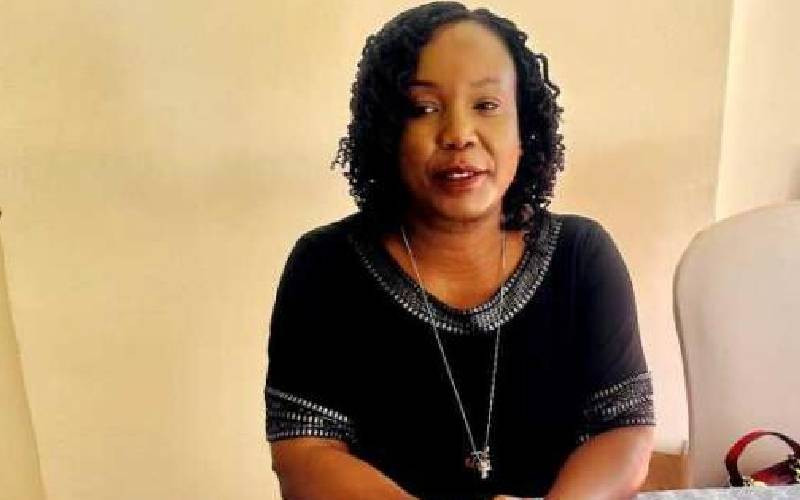NAIROBI: The Youth Enterprise Development Fund (YEDF) was introduced in 2006 as part of the Government’s response to the high levels of unemployment among young people.
However, as stated on the fund’s website, there isn’t yet a comprehensive strategy, policy and legal framework for this fund, even though it is operational.
The ministry is still developing a lot of its form, character and operations on youth affairs. Nevertheless, the process of defining the fund’s policy and legislative framework can benefit from the experiences of the youth who access the fund.
But even before we go into these lessons, more learnings are being received with regard to how the fund is being misappropriated, and the youth are expressing their dissatisfaction with the direction it is headed.
Can we say the fund was put in place without a clear strategy, and that the Government is yet to deliver value on its pro-youth agenda? Let’s examine these statements.
GROWTH AND PERFORMANCE
First, YEDF is supposed to provide loans to existing microfinance institutions, registered NGOs involved in micro-financing, and to savings and credit organisations for onward lending to youth enterprises.
This is where value could be lost since these institutions have passed on to young entrepreneurs the constraints they face in providing accessible finance to Kenyans.
They also have their margins to think about, and high operating costs to cater for. Therefore, the accessibility of this fund to the youth, who have little to zero collateral for loans, is highly doubtful.
The fund’s second objective is to attract and facilitate investments in commercial infrastructure oriented towards micro, small and medium enterprises (MSMEs).
Third, it is supposed to help youth-oriented MSMEs develop linkages with large enterprises.
Fourth, it should facilitate the marketing of products and services from youth enterprises in both domestic and international markets. And fifth, facilitate employment of youth in the international labour market.
The second to fifth objectives could easily have been copy-pasted from any document, as years on, we still do not see how these strategic objectives can be delivered.
They lack the hallmark of a good strategy, which is SMART — that is, Specific, Measurable, Agreed upon, Realistic and Time-based.
In other words, the five strategic objectives of YEDF are not specific since we don’t even know, for instance, what facilitating the marketing of products and services from youth enterprises in local and international markets means. Surely if they are of poor quality they cannot be marketed. Isn’t there a lack of priority here?
Again, regarding the facilitating of employment in international labour markets, the priority should be on developing young people’s skills and exposure.
THE BENEFICIARIES
Conversations with the youth who have accessed this fund demonstrates that even the process of issuing loans doesn’t facilitate their business growth and performance.
One entrepreneur, whom we shall call Tom, narrated how he qualified for YEDF to help set up a unisex salon. But in as much as YEDF says it issues money to a microfinance that then passes on the money to the young entrepreneur, Tom didn’t actually get the cash.
The microfinance asked Tom to identify a supplier of the equipment he needed for the salon, who was then paid. Tom was left with monthly repayments that really hit him hard.
He says he would have been happier to get the money, as with a flight to Dubai to purchase equipment, he would have got more value. He believes the only beneficiaries in the process were the microfinance that got the money from YEDF, and the equipment supplier, who had very high prices.
YEDF does not consider the value chain of business; it approaches it from a financial angle.
In this regard, the Government needs to strategically design changes to streamline YEDF’s management by enhancing more participation from the youth.
It also needs to help YEDF project managers in strategy formulation for development projects by incorporating all stakeholders. The youth need to find ways to own YEDF projects.
The Government must put its money where its mouth is with clear priorities — and be SMART about them.
The writer is senior lecturer, strategy and competitiveness, and academic director, MBA programmes, Strathmore University.
[email protected]
 The Standard Group Plc is a multi-media organization with investments in media
platforms spanning newspaper print operations, television, radio broadcasting,
digital and online services. The Standard Group is recognized as a leading
multi-media house in Kenya with a key influence in matters of national and
international interest.
The Standard Group Plc is a multi-media organization with investments in media
platforms spanning newspaper print operations, television, radio broadcasting,
digital and online services. The Standard Group is recognized as a leading
multi-media house in Kenya with a key influence in matters of national and
international interest.
 The Standard Group Plc is a multi-media organization with investments in media
platforms spanning newspaper print operations, television, radio broadcasting,
digital and online services. The Standard Group is recognized as a leading
multi-media house in Kenya with a key influence in matters of national and
international interest.
The Standard Group Plc is a multi-media organization with investments in media
platforms spanning newspaper print operations, television, radio broadcasting,
digital and online services. The Standard Group is recognized as a leading
multi-media house in Kenya with a key influence in matters of national and
international interest.









